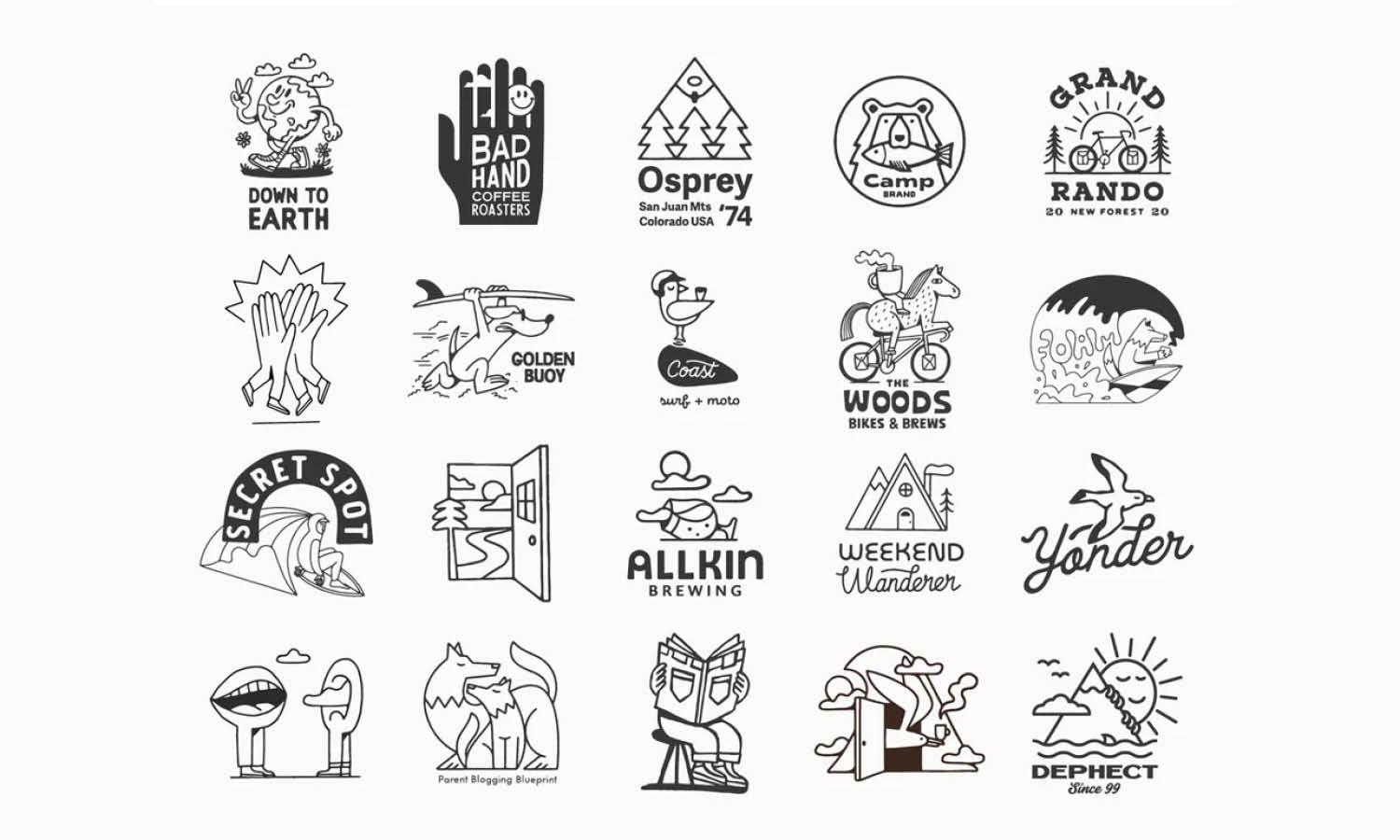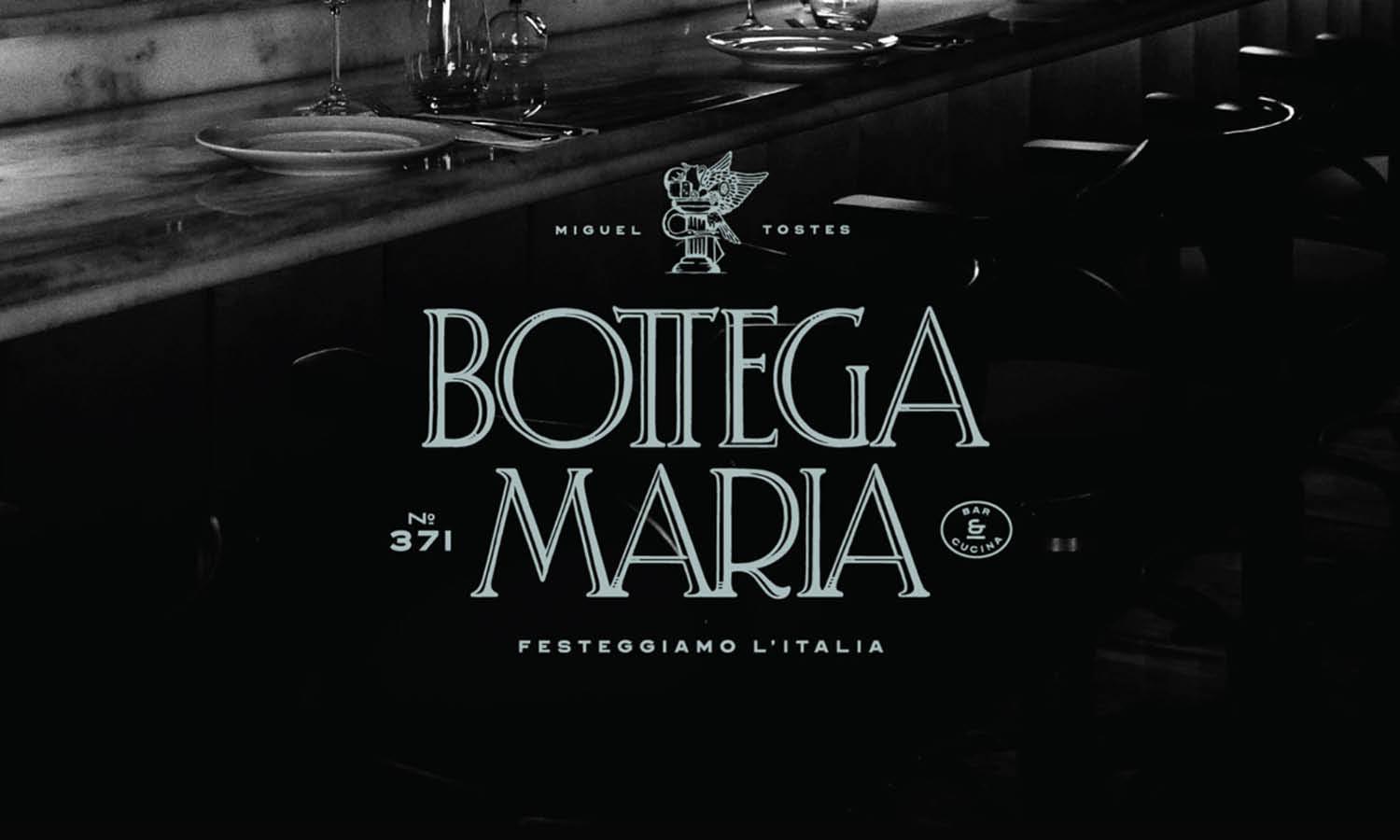Integrating Feng Shui Wisdom for Powerful Logo Designs

Source: Fabio Issao, Solitude or Small Meditations #17, Dribble, https://dribbble.com/shots/15269286-Solitude-or-small-meditations-17
A logo is more than just a visual identity—it is an energetic symbol that represents a brand’s values, mission, and aspirations. By incorporating Feng Shui wisdom into logo designs, businesses can harness the power of balance, harmony, and positive energy to create a strong and lasting impact. Rooted in ancient Chinese philosophy, Feng Shui emphasizes the flow of energy, or “chi,” through elements, colors, shapes, and symbols. When applied strategically, these principles enhance a brand’s presence, attract prosperity, and establish trust with audiences.
Feng Shui offers a holistic approach to design by considering how visual elements interact with energy forces. Each shape, color, and symbol carries a unique frequency that influences perception and emotional response. For instance, circular logos promote unity and wholeness, while upward-facing elements signify growth and ambition. Choosing the right combination of these elements can create a harmonious and powerful brand identity.
This article explores how designers can integrate Feng Shui principles into logo designs to create visually appealing, meaningful, and energetically aligned symbols. Whether for corporate branding or personal logos, understanding and applying these principles can make a significant difference in the effectiveness and success of a logo.
Understanding the Five Elements
In Feng Shui, the five elements—wood, fire, earth, metal, and water—play a crucial role in shaping energy flow. When applied to logo designs, these elements help create balance, attract positive energy, and reinforce a brand’s identity. Each element carries specific characteristics that influence perception and emotional impact.
Wood represents growth, creativity, and expansion. It is associated with green and brown tones, as well as organic, elongated shapes. Brands that focus on wellness, sustainability, or education can benefit from incorporating wood elements into their logo designs.
Fire symbolizes passion, energy, and transformation. It is represented by red, orange, and strong angular shapes like triangles. Fire elements are ideal for businesses in entertainment, marketing, and technology, where boldness and dynamism are essential.
Earth provides stability, reliability, and grounding. It is linked to yellow, beige, and square shapes that communicate trust and dependability. Industries like real estate, finance, and construction often use earth-based designs to convey security and longevity.
Metal signifies precision, strength, and clarity. White, gray, and metallic shades, along with circular or geometric patterns, reflect metal’s qualities. This element is commonly found in technology, engineering, and luxury brand logos.
Water embodies fluidity, communication, and adaptability. Blue hues, wavy patterns, and curved designs represent water. Businesses in travel, consulting, and health services benefit from water-based logo designs that promote flexibility and trust.
By understanding these five elements, designers can create logos that align with brand values while enhancing the flow of positive energy.
Choosing Colors With Energy in Mind
Color is one of the most powerful elements in Feng Shui, influencing emotions, perceptions, and energy flow. When designing a logo, selecting the right colors ensures alignment with the brand’s essence while enhancing its overall impact.
Red is associated with the fire element and symbolizes power, excitement, and passion. It is often used in logo designs for brands that want to capture attention and convey strong emotions, such as entertainment, food, and sports companies.
Blue represents the water element, signifying trust, calmness, and communication. It is widely used in corporate, financial, and healthcare logos to project professionalism and stability.
Green is linked to the wood element, symbolizing growth, renewal, and vitality. Companies in wellness, sustainability, and education use green to reinforce themes of health and development.
Yellow is connected to the earth element, representing warmth, optimism, and reliability. It is a great choice for brands that want to exude friendliness and positivity, such as those in hospitality and retail.
White, Gray, and Metallic Shades align with the metal element, promoting precision, efficiency, and clarity. These colors are commonly found in technology, luxury, and automotive logo designs.
Black and Deep Blue convey depth, mystery, and sophistication. While not directly tied to a single Feng Shui element, they can enhance contrast and authority when used strategically.
By choosing colors based on Feng Shui principles, designers can create logos that not only look visually appealing but also radiate the right energy to attract success.
Balancing Yin and Yang
Yin and Yang are the fundamental forces of Feng Shui, representing the balance between passive and active energies. When applied to logo designs, maintaining this balance creates harmony, making the brand visually appealing and energetically aligned.
Yin energy is soft, receptive, and calming. It is represented by curves, circular shapes, and cooler colors like blue, green, and gray. Brands that focus on wellness, hospitality, or holistic services benefit from Yin-based logo designs, as they evoke trust, tranquility, and nurturing energy.
Yang energy, on the other hand, is bold, active, and dynamic. It is symbolized by sharp angles, strong geometric forms, and fiery colors like red, orange, and yellow. Industries such as sports, technology, and finance often use Yang-dominant logos to exude strength, ambition, and innovation.
A well-balanced logo does not need equal parts of Yin and Yang, but rather the right proportion based on brand identity. A healthcare brand, for example, may primarily use Yin energy with subtle Yang elements to convey both care and professionalism. Meanwhile, a tech startup might incorporate more Yang energy while maintaining rounded edges or neutral tones to prevent excessive aggression.
Integrating both energies ensures a logo remains visually engaging, emotionally compelling, and energetically effective. Whether through shape, color, or typography, balancing Yin and Yang fosters an ideal blend of harmony and impact in Feng Shui-inspired logo designs.

Source: Martine Lindstorm, YinYang Monkey - Logo, Dribble, https://dribbble.com/shots/7271077-YinYang-Monkey-Logo
Implementing Favorable Shapes
Shapes play a crucial role in Feng Shui, as they influence energy flow and perception. When applied to logo designs, they help establish the brand’s identity while maintaining a sense of balance and harmony.
Circular Shapes represent unity, wholeness, and infinite energy. They create a feeling of inclusiveness and flow, making them ideal for brands that emphasize community, wellness, or global connection. Circular logos help cultivate positive and harmonious energy.
Square and Rectangular Shapes symbolize stability, structure, and trust. These strong, grounded forms work well for industries that require reliability, such as finance, real estate, and security. They communicate strength and dependability.
Triangular Shapes embody action, ambition, and innovation. Upward-facing triangles represent growth and success, making them suitable for progressive industries like technology, startups, and leadership brands. However, overly sharp angles can create an aggressive feel if not balanced properly.
Curved and Wavy Shapes connect to water energy, promoting adaptability, communication, and creativity. They are excellent for brands that focus on movement, travel, or artistic expression. Soft curves can make a logo feel welcoming and friendly.
Hexagons and Octagons reflect harmony and balance. These complex yet symmetrical shapes are often associated with wisdom and holistic well-being, making them effective for brands in health, education, and spirituality.
By thoughtfully selecting the right shapes in logo designs, businesses can create a strong and meaningful brand presence while ensuring a smooth energy flow in alignment with Feng Shui principles.
Applying the Bagua Map
The Bagua Map is a fundamental Feng Shui tool used to analyze and optimize energy flow. When applied to logo designs, it helps position elements in ways that enhance prosperity, balance, and brand impact. The map consists of nine sectors, each representing an essential life area:
Wealth (Top Left): Incorporating symbols of abundance, such as gold accents or flowing curves, enhances financial success.
Fame (Top Center): Strong, upward-focused elements and fiery colors like red amplify recognition and brand authority.
Relationships (Top Right): Soft, balanced shapes and harmonious colors promote trust, making this ideal for relationship-oriented brands.
Family (Left Center): Earth tones and stable, rectangular forms reinforce security and heritage, strengthening a brand’s foundation.
Health (Center): A symmetrical, well-proportioned design enhances harmony and longevity, promoting overall brand wellness.
Creativity (Right Center): Unique, fluid shapes and light tones stimulate innovation, making this area ideal for artistic and tech-focused brands.
Knowledge (Bottom Left): Deep blues, structured typography, and traditional symbols convey intelligence and expertise.
Career (Bottom Center): Water-inspired elements, wavy lines, and darker tones encourage adaptability and professional growth.
Helpful People (Bottom Right): Open, metallic, or white-toned designs attract networking opportunities and mentorship.
By structuring a logo based on the Bagua Map, designers can ensure that every element aligns with positive energy, reinforcing a brand’s mission while fostering success and harmony.
Utilizing Auspicious Symbols
In Feng Shui, symbols hold powerful meanings, influencing the energy a brand attracts. Incorporating auspicious symbols into logo designs can enhance prosperity, strength, and success by reinforcing positive associations with ancient wisdom.
The Dragon represents power, protection, and good fortune. It is often used in logos for financial institutions, security companies, and elite brands seeking to project dominance and success.
The Phoenix symbolizes renewal and transformation. Its presence in logo designs suits businesses that focus on innovation, growth, and rebirth, such as tech startups and personal development brands.
The Koi Fish is a sign of perseverance, prosperity, and ambition. It is frequently seen in wellness, finance, and lifestyle brands that aim to project resilience and success.
The Lotus Flower represents purity, enlightenment, and new beginnings. This symbol is particularly effective for wellness, beauty, and holistic health brands, reinforcing themes of balance and transformation.
The Infinity Loop embodies harmony, continuity, and limitless potential. Many brands in education, technology, and consulting use this symbol to reflect lasting success and ongoing growth.
Circular and Spiral Patterns signify unity, wholeness, and movement. These shapes are often found in Feng Shui logo designs to attract positive energy and create a sense of flow.
Selecting the right symbols ensures that a logo not only looks aesthetically appealing but also carries meaningful energy. By integrating auspicious Feng Shui elements, businesses can strengthen their brand identity and attract good fortune through intentional design.
Avoiding Cluttered Designs
In Feng Shui, simplicity and clarity are essential for maintaining the smooth flow of energy. A cluttered logo disrupts harmony, making it difficult for the viewer to process its meaning. By adopting a minimalistic and well-structured design, brands can create logos that radiate balance and effectiveness.
Overuse of Elements can overwhelm the viewer and dilute the logo’s impact. Too many symbols, colors, or intricate details create visual noise, blocking the free movement of positive energy. Instead, each element should serve a purpose and contribute to a cohesive message.
Negative Space plays a crucial role in Feng Shui logo designs. White space allows energy to flow freely and gives the logo room to "breathe." A balanced composition prevents congestion, making the design more visually appealing and easier to understand.
Simplified Typography ensures readability and enhances the overall energy of a logo. Overly complex fonts can create unnecessary tension, while clean, well-spaced lettering conveys clarity and professionalism.
Proportional Balance is key to maintaining harmony. Symmetrical logos exude stability, while asymmetrical designs should be carefully structured to prevent imbalance. The right proportions help create a natural and inviting presence.
A well-designed, uncluttered logo allows positive energy to circulate without obstruction. By focusing on clarity, simplicity, and meaningful composition, brands can achieve an impactful design that aligns with Feng Shui principles and resonates with their audience.

Source: Dylan Menke, Star Logo, Dribble, https://dribbble.com/shots/16454702-Star-Logo
Emphasizing Directional Energy
In Feng Shui, the direction of movement in a logo plays a crucial role in how energy, or “chi,” flows. Directional energy guides perception and influences the way people interpret the brand’s message. Aligning the directionality of a logo with a brand’s intention enhances its overall effectiveness and success.
Upward Movement symbolizes growth, ambition, and prosperity. Logos with upward-facing elements—such as arrows, triangles, or rising curves—convey progress and innovation. This design choice is ideal for businesses focused on leadership, technology, or personal development.
Horizontal Movement reflects stability, trust, and continuity. Logos that incorporate horizontal lines or flowing elements suggest a steady and dependable energy, making them well-suited for financial institutions, legal firms, and educational organizations.
Circular and Rotational Motion signifies balance, wholeness, and infinite potential. Spiral or circular designs encourage a smooth energy flow, creating a sense of harmony. These elements are commonly used in wellness, holistic health, and sustainability brands.
Rightward Motion suggests forward-thinking and future-oriented perspectives. Logos that lean or point toward the right evoke a sense of movement and progress, ideal for brands in innovation and business growth.
Avoiding Downward Energy is important, as downward-facing elements can suggest decline, stagnation, or negative energy. If a downward shape is necessary, it should be balanced with an uplifting element to counteract any unwanted connotations.
By consciously directing energy in logo designs, businesses can create a visual identity that aligns with their aspirations, reinforcing positive momentum and brand success.
Enhancing Prosperity With Gold Accents
Gold is one of the most powerful colors in Feng Shui, symbolizing wealth, success, and abundance. When used in logo designs, gold accents attract prosperity and elevate the brand’s image, making it appear prestigious and trustworthy.
Gold Represents Financial Growth, making it an excellent choice for businesses in finance, luxury, and high-end services. When incorporated thoughtfully, gold conveys sophistication and exclusivity, reinforcing the perception of value.
Balance Is Key when using gold in a logo. Too much gold can appear excessive or overpowering, while subtle gold accents—such as a refined stroke, a gradient highlight, or metallic typography—can enhance the design without overwhelming it.
Pairing Gold With Complementary Colors amplifies its effect. Deep blues and blacks create a strong contrast, exuding power and authority. White and neutral shades help gold stand out in a balanced and elegant way.
Metallic Finishes in Logos introduce depth and texture, mimicking the reflective qualities of real gold. This technique enhances the sense of richness and prosperity in branding.
Gold as an Energy Amplifier works well with symbols of success, such as upward-moving elements, coins, or geometric stability. When combined with other Feng Shui principles, it strengthens the logo’s ability to attract wealth and positive opportunities.
By incorporating gold accents thoughtfully, designers can create a logo that not only looks luxurious but also radiates the energy of prosperity, reinforcing success for the brand.
Ensuring Symmetry and Balance
Symmetry and balance are fundamental in Feng Shui, as they create harmony and stability in design. A well-balanced logo exudes confidence, reliability, and positive energy, making it more visually appealing and effective.
Symmetrical Logos Represent Stability and are often perceived as more trustworthy. When both sides of a design mirror each other, it creates a sense of order and balance, which is beneficial for brands that want to project consistency and professionalism.
Asymmetry Can Be Used Effectively when carefully structured. While traditional Feng Shui favors symmetry, asymmetrical logos can still maintain balance through the thoughtful placement of elements. A slight tilt or directional shift should be countered with grounding elements to avoid chaotic energy.
Proportion and Spacing Matter in ensuring equilibrium. Uneven spacing or improperly scaled elements can create an unbalanced design, leading to subconscious discomfort. Proper alignment enhances the flow of energy and reinforces clarity in branding.
Circular and Geometric Designs naturally promote balance, making them popular choices in Feng Shui logo designs. Circles symbolize unity, while structured geometric shapes add a sense of security and order.
The Rule of Thirds Enhances Harmony, helping designers structure the logo in a way that feels aesthetically pleasing while maintaining energetic balance. By aligning key elements within this grid, a logo can achieve both visual appeal and positive chi flow.
A well-balanced logo, whether symmetrical or intentionally structured with dynamic asymmetry, enhances brand perception and creates a strong, positive presence. When aligned with Feng Shui principles, it fosters success and harmony.
Conclusion
Integrating Feng Shui wisdom into logo designs creates a powerful blend of aesthetics and energy flow, ensuring harmony, prosperity, and success. By carefully selecting colors, shapes, and symbols, designers can craft logos that resonate deeply with audiences while enhancing positive chi. Elements such as gold accents, symmetry, and directional energy further strengthen the impact of a brand’s identity. A well-balanced Feng Shui-inspired logo not only looks visually appealing but also attracts success and stability. By applying these principles thoughtfully, businesses can create logos that embody strength, clarity, and long-term growth in a meaningful and energetic way.
Let Us Know What You Think!
Every information you read here are written and curated by Kreafolk's team, carefully pieced together with our creative community in mind. Did you enjoy our contents? Leave a comment below and share your thoughts. Cheers to more creative articles and inspirations!
















Leave a Comment